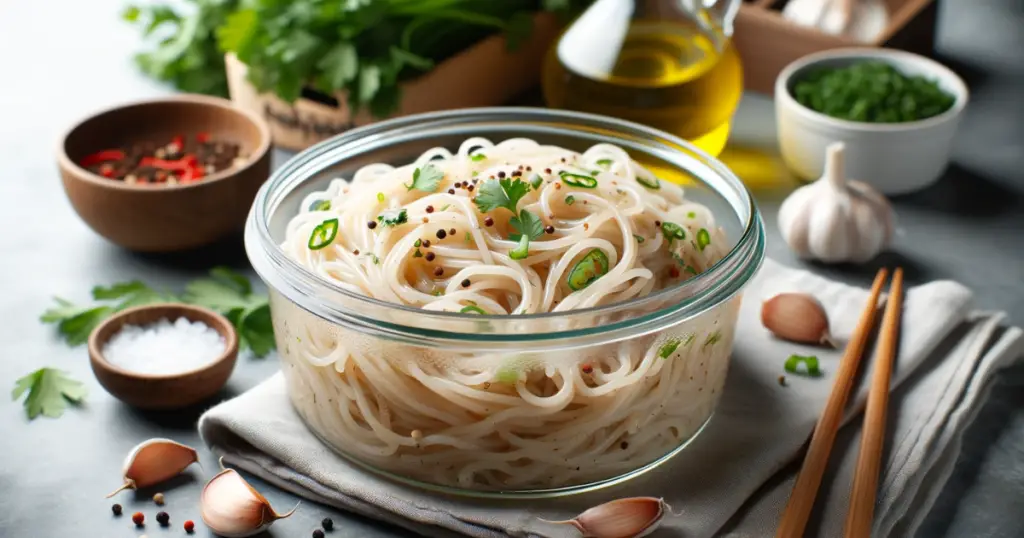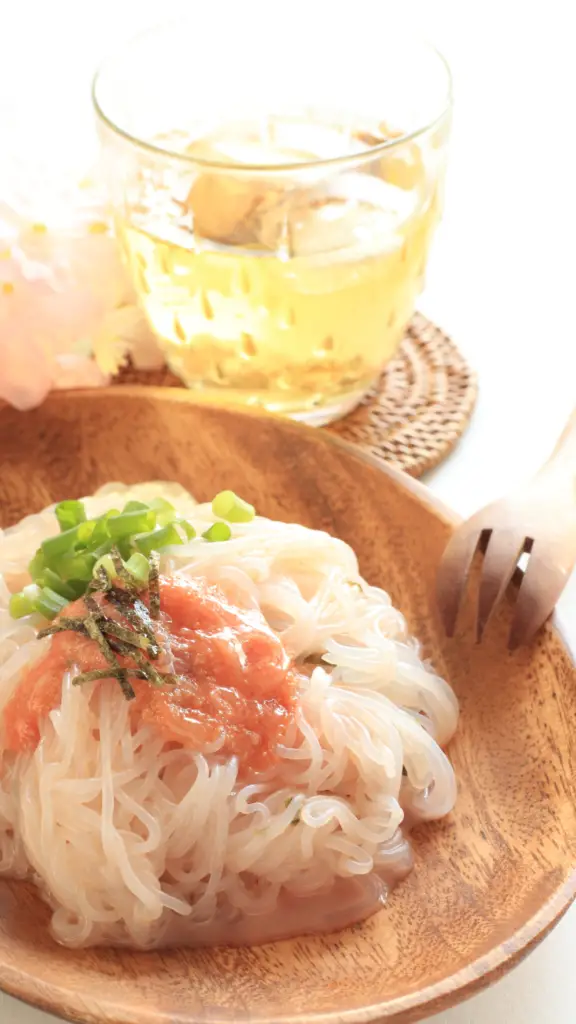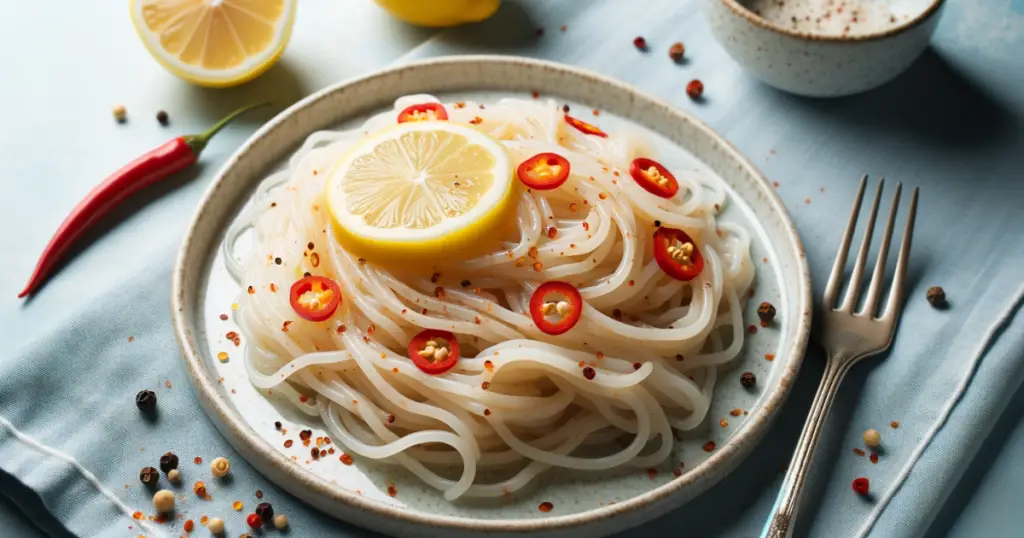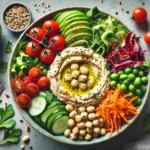In a world where pasta dishes reign supreme, a new contender has emerged to challenge the throne. It’s not the regular noodle we are familiar with, but a unique kind that’s both intriguing and beneficial. Say hello to Konjac noodles, a food that’s swiftly gaining popularity in health circles and among food enthusiasts globally. Now, let’s unravel the mystery: what are Konjac noodles?

What Are Konjac Noodles?
Konjac noodles are a type of noodle made from the root of the Konjac plant, also known as the Konjac yam. Originating from Asia, these noodles are often referred to as miracle noodles, owing to their numerous health benefits. They are a low-calorie food that contains a high amount of soluble fiber, making them a perfect choice for those looking to shed some pounds without compromising their love for noodle dishes.
Also Read: Shirataki Noodles Keto Recipes: The Wonder You’ll Love!
What Are Konjac Noodles? Fascinating Facts About Konjac Noodles
- Origin: Konjac noodles hail from Southeast Asia and have been a staple in Japanese cuisine for over a thousand years.
- Calorie Content: These noodles are often termed as “zero-calorie” or “low-calorie” due to their negligible calorie content.
- Water Content: Konjac noodles are composed of about 97% water and 3% glucomannan fiber, which is a type of soluble fiber.
- Appetite Suppressant: The glucomannan fiber in Konjac noodles can help to suppress appetite by promoting a feeling of fullness.
- Versatile Culinary Use: They can be used in a variety of dishes including soups, salads, stir fries, and traditional pasta dishes, making them a versatile choice for health-conscious food enthusiasts.
- Gluten and Grain Free: Konjac noodles are gluten-free and grain-free, making them a suitable option for individuals with gluten sensitivity or celiac disease.
- Blood Sugar Management: Due to their high fiber content, Konjac noodles can help in managing blood sugar levels post-meal.
- Cholesterol Lowering: Studies have shown that the glucomannan fiber found in Konjac can aid in lowering bad cholesterol levels.
- Vegan and Paleo Friendly: Being plant-based and grain-free, Konjac noodles fit well into both vegan and paleo dietary lifestyles.
- Traditional Production: The traditional process of making Konjac noodles involves grinding the Konjac yam into flour, mixing it with lime water, and then shaping the mixture into noodles.
- Unique Texture: Their unique rubbery texture is often a topic of discussion, and while it may take a bit of getting used to, it provides a unique culinary experience.
- Availability: Initially more common in Asian markets, Konjac noodles have now found their way into mainstream supermarkets and online stores due to their growing popularity.

| Feature | Detail |
|---|---|
| Origin | Root of the Konjac Plant |
| Other Names | Miracle Noodles, Shirataki |
| Texture | Rubbery |
| Nutritional Value | Low Calorie, High in Fiber |
Texture and Preparation
Konjac noodles have a distinct rubbery texture, which might be a new experience for many. Preparing them is a breeze. To begin with, you’ll need to drain the noodles from their packaging liquid. A quick rinse under cold water, followed by a minute or two on high heat, will remove the residual odor and get them ready for your favorite recipes. Whether you are making stir fries or pasta dishes, these noodles provide a great, gluten-free alternative to traditional pasta.
Also Read: Low Carb Noodles at Walmart: Your Guide to Guilt-Free Pasta
Substitutes and Similarities
If Konjac noodles are hard to come by in your local Asian market, fret not. Zucchini noodles are a well-loved substitute, providing a similar low-calorie, gluten-free option. Both noodle types offer a fantastic base for a myriad of sauces and ingredients, allowing the creativity in your cooking to flourish.
Health Benefits Galore
The health benefits of Konjac noodles are nothing short of impressive. The soluble fiber content, known as glucomannan, aids in digestion, helps maintain blood sugar levels, and promotes a feeling of fullness, which is a boon for those aiming to control their appetite. Additionally, a single serving of Shirataki noodles is almost 97% water, making it a hydrating food choice.
What Are Konjac Noodles? Dive into a Dish
Now that you’ve got the scoop on what Konjac noodles are, why not give them a try? Here’s a simple Shirataki noodle recipe to get you started. You will need Konjac flour, lime water, and your choice of veggies and protein. Prepare the noodles as described earlier, toss them on high heat with your favorite ingredients, and voila! Your first Konjac noodle dish is ready to be devoured.

Embracing a Healthful Delight: The Final Scoop on Konjac Noodles
With a white waterfall of health benefits cascading from every serving, Konjac noodles are a true marvel in the realm of healthy eating. Their versatility in various dishes, coupled with the ease of preparation, makes them a worthy addition to your food repertoire. So, the next time you hit the Asian market, don’t forget to grab a pack of Konjac noodles and venture into a world of healthy, scrumptious meals.
FAQs
Are konjac noodles good for you?
Konjac noodles are often considered healthy due to their low calorie and carb content. They are almost calorie-free, containing about 8 calories per 100 grams, making them a great alternative for individuals looking to reduce their calorie intake. The glucomannan fiber present in konjac noodles can also help to keep you feeling full and satisfied.
Is there any side effects of konjac noodles?
What are Konjac Noodles? They are a low calorie, gluten-free alternative to traditional noodles, made from the root of the konjac plant. While they are safe for most people, some may experience digestive discomfort like bloating and diarrhea, particularly if they are not used to consuming high amounts of fiber. Additionally, konjac noodles can interfere with the absorption of certain medications if eaten at the same time.
Can I eat konjac noodles everyday?
It’s generally safe to eat konjac noodles every day as part of a balanced diet, but it’s important to ensure you’re also getting a variety of other nutrients from different food sources. Some individuals might experience digestive discomfort, especially if they are not accustomed to a high-fiber diet, so it’s wise to monitor your body’s reaction and consult with a healthcare professional if needed.
Are konjac flour noodles healthy?
As you know what are Konjac Noodles, the noodles made of konjac flour, which is derived from the root of the konjac plant, known for its fiber content. These noodles are low in calories and carbohydrates, making them a popular choice among those following a low-carb or calorie-restricted diet. However, while they can be a healthy option, they lack other essential nutrients like protein and vitamins, so they should be consumed as part of a balanced diet with a variety of other nutrient-rich foods.
I Found This Fascinating: Are Konjac Noodles Keto Friendly? By Dr. Eric Berg (Not a Paid Promotion)






Leave a Reply